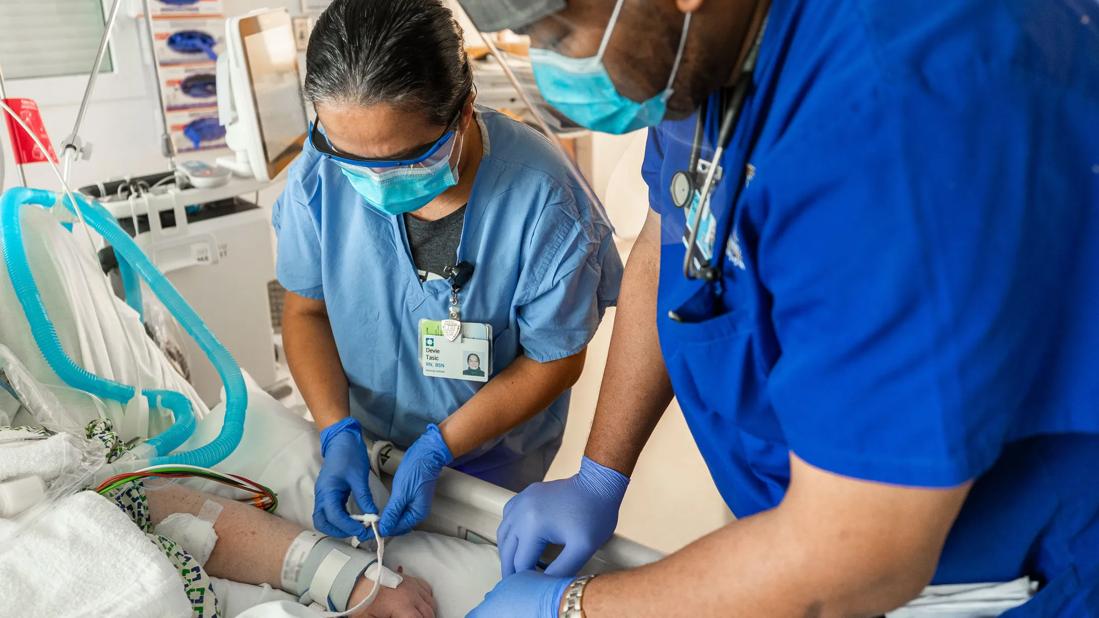As the pandemic evolves, rheumatologists must continue to be mindful of most vulnerable patients

Editor’s Note: On January 26, 2023, the U.S. Food and Drug Administration revised the Emergency Use Authorization for Evusheld. While this pre-exposure prophylaxis is not effective for current vaccine variants, the positive results provide insights into future opportunities.
Advertisement
Cleveland Clinic is a non-profit academic medical center. Advertising on our site helps support our mission. We do not endorse non-Cleveland Clinic products or services. Policy
By Cassandra Calabrese, DO, and Leonard H. Calabrese, DO
The COVID-19 pandemic has affected the field of rheumatology in many ways, and while our understanding of the virus has improved, and we now have many effective tools for prevention and treatment, the pandemic will continue to require our focus and expertise.
The future of COVID-19 remains unpredictable, in large part due to the emergence of new variants of concern that may have unpredictable impacts on vaccine protection and effectiveness of treatment and pre-exposure prophylaxis (PrEP). We expect that the pandemic will continue down two paths: one for healthy, vaccinated individuals, and another for those who are immunocompromised and remain at higher risk.
Immune-mediated inflammatory diseases and immunosuppressive therapies used as treatment create a heterogeneous group of immunosuppressed patients, with varying levels of risk for severe COVID-19, largely due to poor vaccine responses. Rheumatologists are now called upon to have knowledge of which patients are more vulnerable and how to counsel on risk, and to recommend vaccination and PrEP when appropriate.
Perhaps most importantly, patients and practitioners must be aware of available treatments and how to get them. Globally, we continue to see gaps in both knowledge and care within this model.
We recently described what we believe to be the optimal role of the rheumatology practitioner in COVID-19. To start, practitioners must have knowledge of available treatments, including oral antivirals and monoclonal antibodies, for whom they are indicated, and how to link patients to care, as these treatments are time sensitive. (Treatment should begin within five days of symptom onset for oral antivirals and seven days for monoclonal antibodies currently in use.) Patient awareness of these treatment options is crucial, and rheumatology practitioners must educate patients on how to be rapidly diagnosed and treated, including use of home tests, and which practitioner to call in the event of infection.
Advertisement
For our most vulnerable (e.g., B-cell-depleted patients), recommending and triaging patients for tixagevimab/cilgavimab (Evusheld™) for PrEP are crucial. Evusheld consists of two Fc-modified fully human monoclonal antibodies administered via intramuscular injection. It is authorized for COVID-19 prevention in patients who are moderately to severely immune compromised and are unlikely to mount an adequate COVID-19 vaccine response.
We have successfully administered Evusheld to more than 500 high risk patients in Cleveland Clinic’s Rheumatology Department since it was first authorized in January 2022, and we have reported our real-world experience.
The R.J. Fasenmyer Center for Clinical Immunology operates in the space intersecting rheumatology and infectious diseases. We are well-poised to tackle COVID-19 and its impact on patients taking immunomodulatory drugs (IMIDs). We have an important role in patient and practitioner education about risk mitigation, prevention and aggressive treatment when appropriate. We also are interested in how long COVID-19 affects IMIDs patients specifically, and are currently studying this.
The pandemic is not over, and its continued presence disproportionately affects many of our vulnerable patients.
Advertisement
Advertisement

Pearls to reduce the strain of RSV, COVID-19 and influenza infections

Unraveling the TNFA receptor 2/dendritic cell axis

Nasal bridge inflammation, ear swelling and neck stiffness narrow the differential diagnosis

Genetic testing at Cleveland Clinic provided patient with an updated diagnosis

No effect on symptom severity or disability, and low prevalence of long COVID

Dynamic modeling improves the accuracy of outcome predictions for ICU patients

From dryness to diagnosis

Multiple comorbidities are associated with pediatric psoriasis